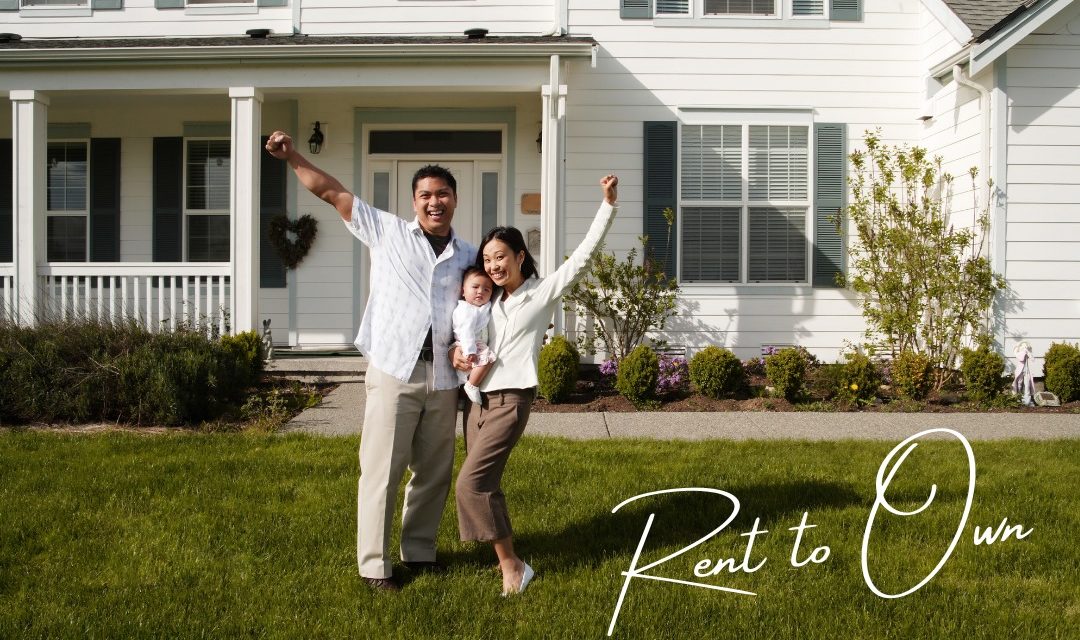Understanding the Basics: How Does Rent to Own Work in Ontario, Canada?

Many individuals in Ontario, Canada dream of owning their own home but find themselves unable to qualify for a mortgage due to various reasons such as poor credit history or lack of a substantial down payment. In such cases, rent to own arrangements can provide a viable pathway to homeownership. Rent to own, also known as lease option or lease-to-own, is a real estate agreement that allows tenants to rent a property with the option to purchase it at a later date.
This arrangement typically consists of two parts: a rental agreement and a separate option agreement. The rental agreement outlines the terms and conditions of the rental period, including the monthly rent and duration of the lease. The option agreement, on the other hand, grants the tenant the right to buy the property at a predetermined price within a specified timeframe.
However, it is important for tenants to fully understand the terms and conditions of a rent to own agreement before entering into one. They should carefully review the rental and option agreements, seeking legal advice if necessary, to ensure they are aware of their rights and obligations.
How Does Rent to Own Work?
The rent to own process typically involves three key components – the rental period, the option fee, and the purchase price. During the rental period, which usually lasts around 2-3 years, the tenant pays a monthly rent to the property owner. In addition to the rent, the tenant also pays an option fee, which is a non-refundable upfront payment. This option fee gives the tenant the right to purchase the property at a predetermined price within a specified timeframe.
The purchase price is the agreed-upon amount that the tenant will pay to buy the property at the end of the rental period. This price is usually determined at the beginning of the rent to own agreement and is often slightly higher than the market value of the property.
Throughout the rental period, the tenant has the opportunity to improve their credit score and save money for a down payment, making them more likely to secure a mortgage loan when it comes time to purchase the property.
At the end of the rental period, the tenant has the option to exercise their right to purchase the property. If they choose to do so, the option fee that they paid at the beginning of the process is typically applied towards the purchase price. If they decide not to buy the property, they forfeit the option fee and the property owner retains ownership.
Advantages of Rent to Own
Rent to own arrangements offer several advantages for both tenants and property owners. For tenants, it provides an opportunity to work towards homeownership while living in the property they wish to purchase. It allows them to build equity over time and potentially improve their credit score, making it easier to secure a mortgage in the future.
For property owners, rent to own arrangements provide a steady stream of income while also allowing them to sell their property at a higher price than it might fetch on the traditional market. It can also attract a larger pool of potential buyers, as some people may not qualify for a mortgage right away but are still interested in eventually owning a home.
Overall, rent to own arrangements can be a beneficial option for tenants and property owners alike, providing an alternative path to homeownership and a way to meet the needs and goals of both parties involved.
Considerations for Rent to Own
While rent to own arrangements can be a great alternative for individuals seeking homeownership, there are certain considerations that both tenants and property owners should keep in mind.
Rent to own arrangements, also known as lease-option agreements, provide a pathway to homeownership for individuals who may not qualify for traditional mortgages or who prefer a more flexible approach to purchasing a home. However, it is important for both tenants and property owners to carefully consider the terms and potential risks involved in such agreements.
For tenants, one key consideration is the upfront option fee or down payment that is typically required in rent-to-own agreements. This fee is often non-refundable and can be substantial, so tenants should ensure they have the financial means to cover this cost. Additionally, tenants should thoroughly review the terms of the agreement, including the length of the lease, the purchase price of the home, and any potential rent credits that may be applied towards the purchase.
Another important consideration for tenants is the condition of the property. Unlike traditional rentals, tenants in rent-to-own arrangements often have more responsibility for maintenance and repairs. It is crucial to thoroughly inspect the property and document any existing issues before entering into the agreement.
Property owners should also carefully evaluate the potential risks involved in rent-to-own agreements. While these arrangements can offer a steady income stream and the potential for a higher sale price, there are also potential downsides. For instance, if the tenant is unable to secure financing to purchase the property at the end of the lease term, the property owner may be forced to find a new tenant or start the selling process again.
Property owners should also consider the possibility of depreciation or damage to the property during the lease term. It is essential to clearly outline the tenant’s responsibilities for maintenance and repairs in the agreement to protect the property owner’s investment.
Rent to own arrangements can provide a viable pathway to homeownership for both tenants and property owners. However, it is crucial for both parties to carefully consider the terms, potential risks, and responsibilities involved before entering into such agreements. Seeking professional advice, such as consulting a real estate attorney or
financial advisor, can help ensure a smooth and successful rent to own experience for all parties involved
Conclusion
Rent to own arrangements provide a viable pathway to homeownership for individuals in Ontario, Canada who are unable to qualify for a mortgage. By understanding the basics of how rent to own works and considering the advantages and considerations involved, both tenants and property owners can make informed decisions and potentially achieve their homeownership goals.
Rent to own arrangements, also known as lease to own or rent with the option to buy, allow individuals who may not be able to secure a traditional mortgage the opportunity to eventually own a home. In Ontario, Canada, this option can be particularly beneficial for those who have a low credit score, insufficient down payment, or a lack of stable income.
The concept of rent to own is relatively simple. A tenant enters into a lease agreement with a property owner, agreeing to pay rent for a specified period of time, typically between one to five years. During this time, a portion of the monthly rent is set aside as a down payment toward the eventual purchase of the property. This allows the tenant to build equity and establish a payment history, which can improve their chances of qualifying for a mortgage in the future.
For property owners, rent to own arrangements can be a profitable investment strategy. They receive steady rental income during the lease period and have a higher likelihood of finding responsible tenants who are invested in the property. Additionally, if the tenant decides not to exercise the option to purchase, the property owner retains the rental income and can potentially find another tenant.
Rent to own arrangements can be a viable pathway to homeownership for individuals in Ontario, Canada who are unable to qualify for a mortgage. By understanding the basics of how rent to own works and considering the advantages and considerations involved, both tenants and property owners can make informed decisions and potentially achieve their homeownership goals.


